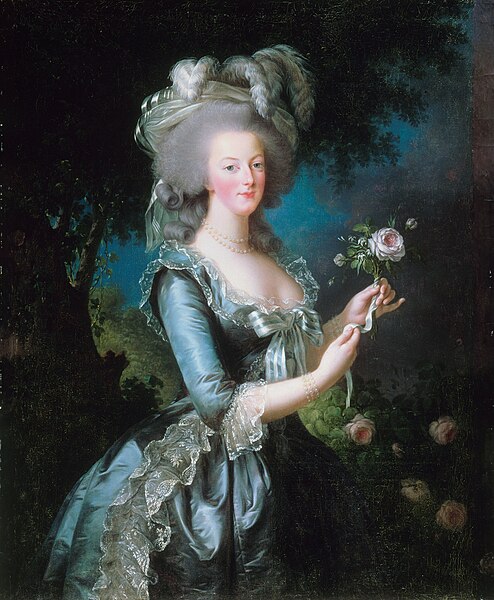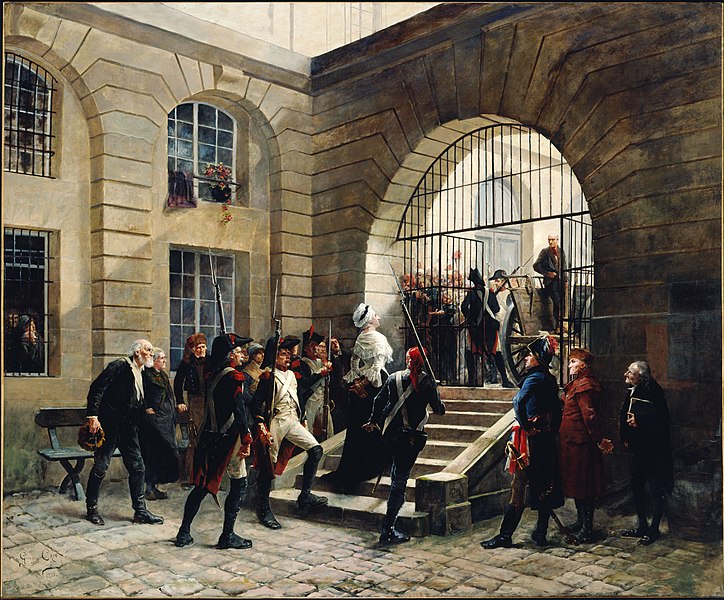Marie Antoinette, born in 1755, was the Archduchess of Austria and later became Queen of France through her marriage to Louis XVI.
Her opulent lifestyle, perceived extravagance, and foreign origins contributed to her controversial reputation during a time of economic turmoil and social inequality.
As the French Revolution unfolded, Marie Antoinette’s role and decisions would play a pivotal part in the changing political landscape, leading to her tragic downfall and execution.
| Date | Event |
|---|---|
| November 2, 1755 | Marie Antoinette is born in Vienna, Austria. |
| May 16, 1770 | Marie Antoinette marries Louis XVI of France in Vienna. |
| May 10, 1774 | Louis XVI becomes King of France, and Marie Antoinette becomes Queen. |
| 1774-1789 | Marie Antoinette’s lavish lifestyle and spending lead to public criticism. |
| Late 1770s-1780s | Queen’s reputation suffers due to perceived disconnect from common people. |
| 1789 | French Revolution begins with economic struggles and discontent. |
| October 1789 | Mob of women march to Versailles, royal family brought to Paris. |
| June 1791 | Royal family’s unsuccessful attempt to flee France (Flight to Varennes). |
| 1792 | France declares itself a republic, monarchy abolished, royal family imprisoned. |
| January 21, 1793 | King Louis XVI is executed by guillotine. |
| October 16, 1793 | Marie Antoinette found guilty, sentenced to death, and executed by guillotine. |
Timeline of Marie Antoinette
1755 – Marie Antoinette is born in Vienna, Austria
On November 2, 1755, Marie Antoinette is born in Vienna, Austria, as Maria Antonia Josepha Johanna. She is the youngest daughter of Holy Roman Emperor Francis I and Empress Maria Theresa.
Also Read: Marie Antoinette Accomplishments
Marie Antoinette grows up in the opulent surroundings of the Habsburg court in Vienna, where she receives a diverse education and becomes proficient in languages, music, and the arts.

1770 – She marries Louis XVI of France in Vienna
In an effort to strengthen the ties between the Habsburgs and the Bourbons, 14-year-old Marie Antoinette is married to the 15-year-old Dauphin (heir to the French throne), Louis-Auguste (future Louis XVI), in a grand ceremony held in Vienna on May 16, 1770.
Also Read: Napoleon Facts
Marie Antoinette’s marriage is part of a diplomatic arrangement to establish an alliance between Austria and France after years of rivalry. The marriage is also meant to improve the image of the French monarchy, which had been tarnished by recent scandals and financial troubles.
1774 – Louis XVI becomes King and Marie Antoinette becomes Queen of France
In May 1774, upon the death of Louis XV, Louis XVI ascends to the throne, and Marie Antoinette becomes the Queen of France.
The young couple faces numerous challenges as they inherit a country burdened by financial crises and social inequality. Marie Antoinette’s initial popularity is high, but her Austrian origins and extravagant lifestyle soon contribute to public criticism and resentment.
Late 1770s-1780s – Marie Antoinette’s lavish lifestyle and reputation lead to criticism
Marie Antoinette’s early years as queen are characterized by her extravagant lifestyle and spending habits, which contrast starkly with the financial difficulties faced by many French citizens.
She develops a reputation for indulgence, hosting elaborate parties, wearing luxurious clothing, and engaging in gambling and other leisure activities.
The Queen’s perceived frivolity and apparent disconnection from the struggles of the common people contribute to public resentment. Pamphlets and satirical cartoons circulate, criticizing her extravagance and questioning her loyalty to France.
1789 – The French Revolution begins due to economic struggles and discontent
Economic hardship, widespread poverty, and a growing desire for political reform lead to the outbreak of the French Revolution in 1789.
The Estates-General is convened in May, with representatives from the clergy, nobility, and commoners gathering to address the nation’s problems. This event marks a turning point in the movement for change.
As social tensions rise, rumors and accusations against the monarchy intensify. Marie Antoinette, already unpopular due to her reputation, becomes a target of public anger and scapegoating.

October 1789 – Angry mob brings the royal family from Versailles to Paris
In October 1789, a large group of women from Paris, frustrated by food scarcity and rising prices, march to the Palace of Versailles to demand action from the monarchy.
The mob reaches Versailles and confronts the royal family. They demand that King Louis XVI and Queen Marie Antoinette return to Paris with them to be closer to the people and address their concerns.
The royal family reluctantly leaves Versailles and relocates to the Tuileries Palace in Paris, where they are essentially held as captives. This move marks a symbolic shift in power and illustrates the monarchy’s weakened position.
June 1791 – The royal family’s attempt to flee France (Flight to Varennes) fails
Faced with increasing political turmoil and threats to their safety, King Louis XVI and Queen Marie Antoinette decide to flee Paris and seek refuge in the eastern French town of Varennes.
Disguised as common travelers, the royal family leaves the Tuileries Palace in the dead of night. However, their plan is thwarted when they are recognized and apprehended in Varennes.
The failed escape significantly diminishes whatever remaining support the monarchy had and reinforces the perception that the royal family was disconnected from the nation’s struggles.
1792 – The French monarchy is abolished, and the royal family is imprisoned
The French Revolution takes a radical turn as political factions become more pronounced and republicanism gains momentum.
In August 1792, a mob storms the Tuileries Palace, resulting in the suspension of Louis XVI’s powers as king. The monarchy is officially abolished on September 21, 1792, and France is declared a republic.
January 21, 1793 – Louis XVI is executed by guillotine
Louis XVI is put on trial by the National Convention, found guilty of treason, and sentenced to death. He is executed by guillotine on January 21, 1793, in the Place de la Révolution in Paris.
The king’s execution marks a significant turning point and increases tensions between revolutionary factions and foreign powers.
October 16, 1793 – Marie Antoinette is found guilty, sentenced to death, and executed by guillotine
After the execution of Louis XVI, Marie Antoinette is held in various prisons, including the Conciergerie in Paris.
On October 14, 1793, she is put on trial by the Revolutionary Tribunal on charges of treason, conspiracy, and sexual misconduct. She is found guilty and sentenced to death.
On October 16, 1793, Marie Antoinette is executed by guillotine. Her execution, like her husband’s, attracts significant atten
The story of Marie Antoinette’s downfall is closely intertwined with the collapse of the French monarchy and the radical transformation of French society during the Revolution. Her fate serves as a poignant example of the tumultuous and tragic events of this era.
